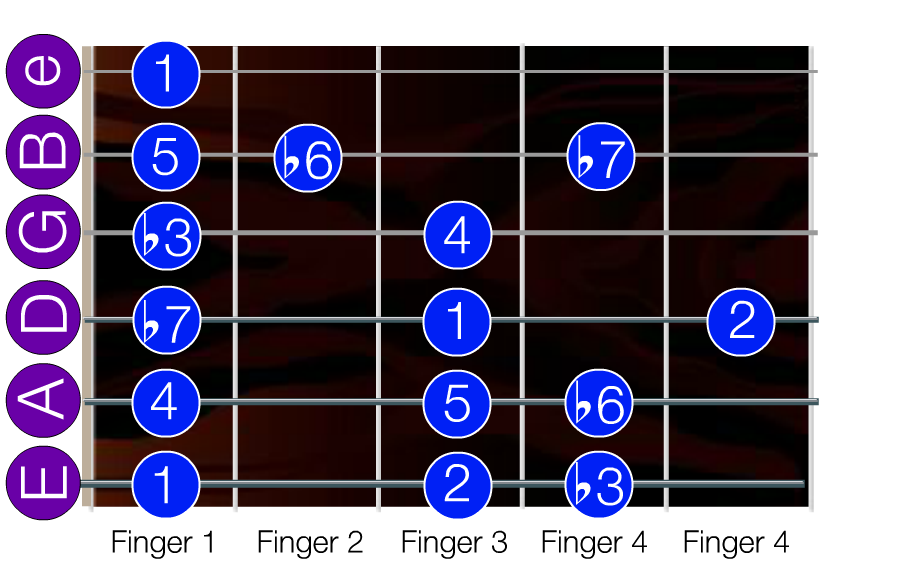The Major Scale ( Ionian)

Dorian (the 2nd Mode)


Phrygian (the 3rd Mode)


Lydian (the 4th Mode)


Mixolydian (the 5th Mode)


Aeolian (the 6th Mode)


Locrian (the 7th Mode)


NOTE: As we learned in “There’s More Than One Shape” Lesson, there are also different fingerings and ways to play the scales below. In fact, very often I would even prefer to use a different shape. These shapes below are simply most traditional and academic way to learn these shapes and so worth studying!
The Major Scale has 7 Shapes that fit together like a Jigsaw Puzzle that cover the entire fretboard. Each shape shares a “wall” with the shape on either side of it. There are no empty spots on the fretboard; once you’ve got to the end of the 7 Shapes of the Major Scale, they just start right back over again!
